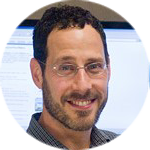Investigators: Premi Haynes PhD, Seth D Friedman PhD
Category: Research - Clinical
DNA is constantly being liberated from damaged or normal cell turnover within our bodies. The DNA is fragmented by enzymes and short pieces are dispersed into blood circulation. These fragments are called “cell-free DNA”. Interestingly, the concentration of these fragments are shown to increase rapidly with disease, exercise, and pregnancy. A recent study shows that the pattern, size, and sequence of these fragments can reveal the tissue of origin. Here we propose to analyze muscle-derived cell-free DNA as a biomarker for Facioscapulohumeral Muscular Dystrophy (FSHD). This approach should also be applicable to other muscular dystrophies as well. We will determine the pattern, size, and sequence of cell free DNA from individuals with FSHD and healthy donors using next generation sequencing technology. We predict that skeletal muscle will be the major contributor of cell free DNA fragments in FSHD. The short half-life of cell free DNA (~15 min) should facilitate its use as a clinical endpoint during a therapeutic intervention allowing scientists to determine the efficacy of a treatment within months rather than years. Cell free DNA could be a new sensitive tool to identify acute changes in individuals with FSHD and other muscular dystrophies.







Connect with us on social media